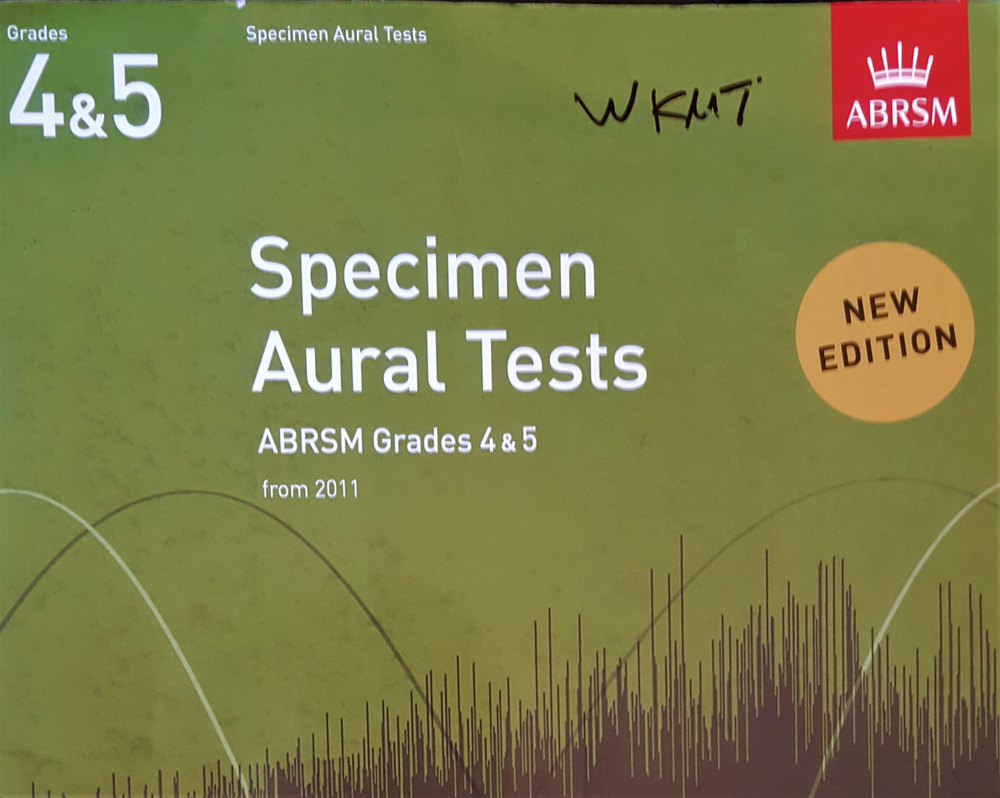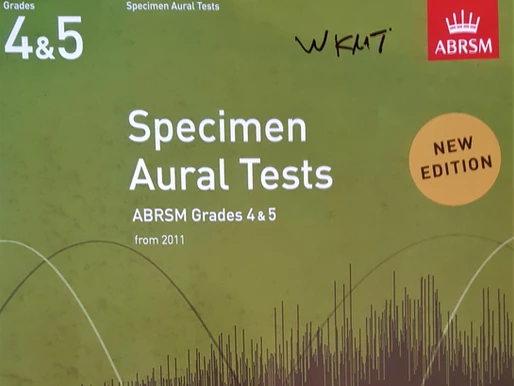Piano Lessons, Uncategorized
How to prepare the abrsm grade 4 aural exam
ABRSM Grade 4 piano
In my previous article, I explained the Aural exam for Grade 1-3.
From my teaching experience, I found out that the majority of my students think that Grade 4 and 5 Aural exam test is much harder than the previous grades. Melodies to sing or play back are getting longer and the students are required to be more independent when describing musical features.
ABRSM Aural Tests Grade 4
Now, I will go step by step describing requirements and preparation for the Grade 4 Aural Test.
1- Melodic Repetition
The candidate is required to sing or play from memory a melody heard twice. The melody will begin on a note from the tonic triad, it will be no longer than 4 bars and it will be in two, three or four times. The candidate may sing or play dynamics and articulation, but the examiner will assess only pitch and rhythm accuracy. The melody will be in a major or minor key up to three sharps or flats.
How to prepare for this task:
The students should have had already enough practise from the previous grades in the Pulse and metre and echo task, but it is always recommended to make thing easier by dividing the two task. As a teacher, I would ask my student to clap the rhythm first and then add the pitch to it. Most of my students choose to sing but I practise playing back the tune as well. It is very important that the student is confident with clapping the rhythm back before starting applying the pitch.
For beginners, it is very good to start with simple rhythm played on the same note and after gradually adding simple intervals to it (2nd, 3rd and 5th). Another good idea is to start singing the scales up to three sharps and flats and learn to sing the relative tonic triad. To vary the practise, it is useful for the teacher to play little section of the pieces the student is learning and ask to sing or play back without the music.
After, it is possible to try put some sample for the proper test.
2- Sight Singing:
In this Aural Test, the candidate is required to sing five notes from the score in free time. One can choose to sing in treble or bass clef.
The notes will be within the range of a 3rd above or below the tonic in the key of C, F or G major. The starting and the ending note will be the tonic.
How to prepare for this task:
For starting, I find it very useful to sing the scales I mentioned above and the relative tonic triad and after start singing the 3rd within the range of five notes. It might be very helpful to play those intervals on the piano so, that the student can answer back as echo. It is a good way to memorise the sound and how it feels singing a major or a minor third.
3- Musical Features:
After listening to a piece by the examiner, the candidate will answer questions about dynamics, articulation, tempo change or tonality and about character.
How to prepare for this task:
Grade 4 is more challenging in the sense that the candidate might be asked to speak more independently about the dynamics in the whole piece or to notice the specific articulation for one voice rather than another one. The examiner will tell the candidate about which topic the first question will be (articulation, dynamics, tempo or tonality) and the second one will be about the character of the piece. This is something completely new.
I encourage my students to use their imagination about describing a piece and if they can relate it to something they are familiar with (colour, paintings, dance, daily life, fairy tale) and after we talk about the tools which help the composer to communicate that character.
Minor keys are not always sad but sometimes, if there is a use of bright articulation, staccato they can be more cheerful, lively and dancing. The use of discordant chords can give a heavy or sad character to the piece and dotted rhythm and syncopation can give a jazzy character to a melody. It is very important to build up a good vocabulary about describing music: dancing, jazzy, lilting, lyrical, light, springy… use your imagination!
4- Rhythmic Repetition and Metre:
The examiner will an extract from the previous piece, ask the candidate to clap back the rhythm and state if it was in two, three or four time.
How to prepare for this task:
The challenge here is that the melody starts becoming a lot longer. It is a good idea to start from short and simple rhythm to clap back and gradually play longer and famous melody until trying the sample tests. To identify the metre, I sometime tell my students the answer in advance so that they know how a two, three or four time metre feel like.
The general suggestion is not to live the Aural exam test as the last thing to do but it is daily training and skill that improves with daily practice. You can check for music aural tests online for free, such as Youtube videos or web pages that help specifically with these exams too, as a complement to your regular study lessons.

ABRSM Aural Tests
Book your trial lesson now and learn more about ABRSM Official examinations!
#pianolessonsforbeginners #pianolessonslondon #adultpianolessons #pianoteacherslondon #abrsm #grade4piano #abrsmauraltestsgrade4 #aural #abrsmgrade4piano #abrsmlondon #auralgrade4 #auralgrade4ABRSM

